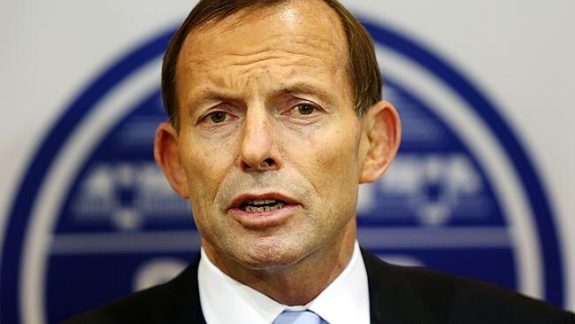Australia versus USA on social housing – how do we compare?

By Dr Heather Holst
On a recent trip to the USA I was struck by the progress being made nationally to solve the homelessness crisis. A few major cities were proudly declaring they had ended veteran homelessness, while others claimed to have ended homelessness completely in their communities.
As deputy CEO of a major homelessness agency in Melbourne I was keen to understand how a country with a strong aversion to social welfare and government intervention seemed to be accepting a level of responsibility and even leadership in efforts to end homelessness.
I knew the US had a history of developing large scale affordable housing projects in several major cities. This was largely borne of the necessity to house a growing immigrant population and low income workforce throughout the early to mid-20th Century.
Much of the newer affordable housing development in the US is supported by low income housing tax credits provided to both not for profit and for profit organizations. For some large cities like New York the impetus for setting impressive targets like 200,000 new or reclaimed affordable housing properties by 2024 continues to relate to productivity and workforce.
New York Mayor Bill de Blaso has embarked on a serious campaign to boost affordable housing stock in that city by 200,000 because essential service workers like nurses, paramedics, and teachers have been priced out of the private rental market in that city. He also wants to provide housing for low income households (those earning under $24,000 a year) who have previously not qualified for ‘affordable housing’ because their income was too low.
Under de Blaso’s plan developers will adhere to mandated affordable housing quotas in where previously quotas were voluntary. The city will offer developers incentives such as the ability to increase the size of developments to compensate for the lower income generated from the affordable stock. It will also offer tax credits and other incentives for new construction. It will also extend financial assistance to landlords who offer or extend regulated rent to tenants that provides security of tenure.
In contrast Australia’s affordable housing stock has been rapidly shrinking in recent decades and all levels of Government have contributed to the crisis that we now find ourselves in. A combination of bad social policy, a lack of leadership at the federal level and a lack of planning and investment at the state and local levels has contributed to the housing crisis affecting hundreds of thousands of Australians today.
In 2011 Australia recorded a shortage of over half a million rental properties and working in the housing sector I can guarantee that number has increased since then. In Melbourne alone it is estimated that only 1% of rental properties are affordable for low income families.
A Senate inquiry into affordable housing in Australia reported in May this year that the market was not capable of solving the affordable housing crisis. The report was critical of the lack of a coordinated national response on this issue.
One of the findings that resonates with the success of the US model was the need to attract private investors into developing low cost housing. This will only be attractive to developers if incentives are offered along the line of the tax credits available to private investors in the US.
Despite cuts in federal affordable housing subsidy programs in the US, New York’s local government has prioritized a boost in supply through a coordinated effort involving 13 city agencies and buy in from more than 200 developers, and other interested parties. They have also committed $8.2 billion in public funds over 10 years to the plan.
The Low Income Housing Tax Credit in the US is part of the Tax Reform Act of 1986. Since its inception it has leveraged over $100 billion of private investment capital which has financed the development of 2.8 million homes for low income families.
It is now widely acknowledged now in Australia that housing affordability and homelessness are not marginal issues that we can continue to ignore in the hope that they will go away. There is no stereotype of ‘a homeless person’. While people from low income and disadvantaged backgrounds or those experiencing family violence, mental health or drug and alcohol issues continue to be hardest hit by the housing crisis in this country, it is increasingly impacting on middle class households.
So how can we learn from the US experience which is by no means perfect but has made significant inroads into a problem that really shouldn’t exist in wealthy, developed nations?
The most significant factor in the success of the US model is political leadership. This leadership comes from Washington and flows down to the states and local authorities who are taking up the challenge issued from the top to end homelessness in local communities.
The approach has been considered and well planned. Where it works best it incorporates well thought out public policy and strategic planning and financing from federal, state and local governments. It refocuses the issue of homelessness and housing affordability as an issue the whole community has a level of responsibility for.
I’m hopeful that Melbourne, with a Mayor who is genuinely concerned about homelessness and housing affordability and a strong philanthropic community that includes construction companies like Grocon, can come up with a New York style plan. It might not be as impressive in scale but it would send a message to Canberra and our neighbouring states that we are serious about an inclusive and humane future for our city. One that affords everyone the very basic right to safe, secure and affordable housing.
About the author: Launch Housing’s deputy CEO Heather Holst has worked in the housing sector since 1989. Heather joined HomeGround Services in 2009 as General Manager Client Services where she led the client services teams across all sites and programs.
Heather is passionate about ending homelessness and is committed to leading Launch Housing in working towards this mission.
Her housing experience spans homelessness service delivery, tenancy advocacy, homelessness policy, program development, research, rural homelessness service coordination in both the non-profit sector and government since 1989.
Heather co-authored the Opening Doors initiative and has contributed to key Victorian housing and homelessness innovations including the coordination of all services, transitional housing, standards, data, rights-based approaches and sector training.
Prior to working in the housing sector, Heather worked in the publishing industry for Penguin Books as a sales representative and then as reader and copy editor and for the Australian Women’s Book Review as business manager.
Heather has a Ph.D. in History from the University of Melbourne. She has published scholarly articles, book chapters and a book, Making a Home: A History of Castlemaine. She taught history for several years at Australian Catholic University, including in the Clemente program for people who have been homeless.
Like what we do at The AIMN?
You’ll like it even more knowing that your donation will help us to keep up the good fight.
Chuck in a few bucks and see just how far it goes!
Your contribution to help with the running costs of this site will be gratefully accepted.
You can donate through PayPal or credit card via the button below, or donate via bank transfer: BSB: 062500; A/c no: 10495969












